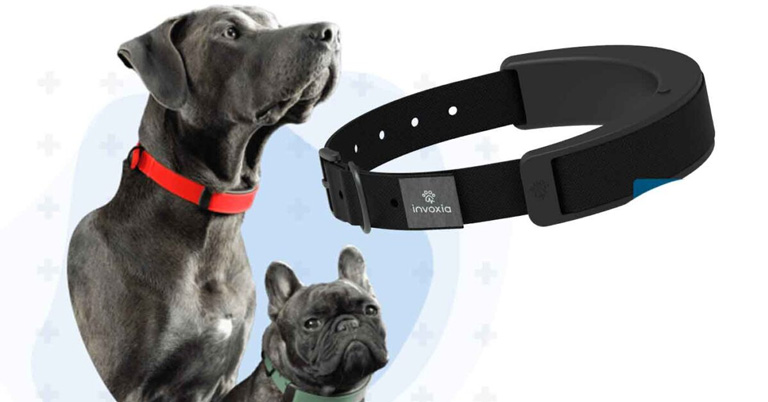The Future is Furry: How AI is Redefining Pet Wellness and Safety
The bond between humans and their pets has never been stronger, and with this deepening connection comes a powerful demand for more sophisticated care. The global pet tech market is booming, moving far beyond automated feeders and simple toys. We are now entering a new era of proactive pet wellness, driven by the convergence of artificial intelligence, the Internet of Things (IoT), and advanced wearable technology. The simple GPS tag of yesterday is evolving into a comprehensive health and safety platform, worn directly on our pets’ collars. This evolution marks a significant paradigm shift, transforming pet ownership from a reactive practice to a data-driven, preventative one. This article delves into the cutting-edge advancements in AI pet tech, exploring the complex systems that power these devices, their integration into our smart homes, and the profound implications for the future of veterinary medicine and animal well-being. From hyper-precise location tracking to real-time biometric analysis, the latest wave of smart collars is creating a digital safety net, offering owners unprecedented peace of mind and a deeper understanding of their furry companions.
The New Breed of Smart Collars: More Than Just a GPS Tag
For years, the primary function of a smart collar was to answer one simple question: “Where is my pet?” While crucial, this singular focus is now being augmented by a suite of technologies that monitor not just location, but overall health. The latest developments in AI Pet Tech News highlight a move towards holistic, 24/7 monitoring platforms that provide a complete picture of an animal’s life.
From Location to Vocation: The Evolution of Tracking Technology
Modern pet trackers have transcended the limitations of early GPS. The most advanced devices now utilize multi-constellation Global Navigation Satellite Systems (GNSS), tapping into GPS, GLONASS, Galileo, and BeiDou satellites simultaneously. This approach dramatically increases location accuracy and reliability, whether a pet is lost in a dense urban canyon or a remote rural area. To transmit this data, these collars leverage a combination of communication technologies. Low-Power Wide-Area Networks (LPWAN) like LTE-M and NB-IoT provide extensive coverage with minimal battery drain, essential for a device that must remain active for days or weeks. For close-range “virtual leash” features and data syncing, Bluetooth Low Energy (BLE) is employed. This multi-pronged connectivity strategy ensures that location data is both precise and consistently available, forming the bedrock of pet safety.
The AI-Powered Wellness Engine
The true revolution lies in the integration of a sophisticated sensor array, turning the collar into a powerful hub for Health & BioAI Gadgets News. These devices are packed with sensors typically found in human fitness trackers:
- Accelerometers and Gyroscopes: These motion sensors work in tandem to track activity levels with incredible detail, distinguishing between walking, running, playing, and sleeping. AI algorithms analyze these patterns to calculate calories burned and ensure the pet is getting adequate exercise.
- Biometric Sensors: Some high-end models are now incorporating photoplethysmography (PPG) sensors to monitor resting heart and respiratory rates. While still an emerging technology for non-human use, it holds immense promise for early detection of cardiac or respiratory issues.
- Temperature Sensors: Ambient and skin-surface temperature sensors can help detect signs of fever or alert owners if a pet is in an environment that is dangerously hot or cold.
Sustainable Power: The Rise of Solar and Kinetic Charging

A persistent challenge for all wearables is battery life. Constant GPS pings and sensor readings are power-intensive, and no one wants their pet’s safety device to die at a critical moment. To combat this, manufacturers are innovating in power solutions. A groundbreaking trend is the integration of thin, flexible solar panels directly onto the collar’s surface. These panels continuously trickle-charge the battery during daylight hours, significantly extending its operational life. While not yet a complete replacement for plug-in charging, solar supplementation can add days or even weeks of use, making it a game-changing feature for outdoor pets. This focus on energy efficiency is a recurring theme in AI Sensors & IoT News, where device longevity is paramount.
Under the Hood: A Technical Breakdown of AI Pet Tech
The seamless user experience of a modern smart collar belies the complex computational processes happening behind the scenes. The decision of where and how to process the vast amount of sensor data is a critical design choice, balancing real-time responsiveness with deep analytical power. This is where the latest advancements in AI Edge Devices News are making a significant impact.
Edge AI vs. Cloud Processing: A Hybrid Approach
The analysis of pet data largely occurs in two locations: on the device itself (the edge) or on remote servers (the cloud).
- Edge AI: Processing data directly on the collar’s low-power microprocessor has several advantages. It enables instantaneous alerts, such as a geofence breach warning that triggers the moment a pet crosses a virtual boundary. This reduces latency and ensures critical functions work even without a stable internet connection. It also enhances privacy by keeping sensitive raw data localized.
- Cloud Processing: For more complex, long-term analysis, data is sent to the cloud. Powerful cloud-based AI models can analyze weeks or months of activity and biometric data to identify subtle trends that might be missed by on-device processing. This is where a pet’s unique wellness baseline is established and refined over time.
Sensor Fusion and Anomaly Detection Models
A single sensor provides a limited view. The real magic happens through “sensor fusion,” where data streams from multiple sensors are combined to create a richer, more accurate context. For example, the accelerometer might detect frantic movement. By fusing this with GPS data showing the pet is stationary and temperature data showing a slight increase, the AI can more accurately infer that the pet is scratching intensely rather than running in circles. This contextual understanding is vital for accurate health monitoring. The core of the wellness engine is anomaly detection. The AI doesn’t look for specific pre-programmed illnesses. Instead, it learns what is “normal” for an individual pet—their typical sleep duration, activity peaks, and scratching habits. It then uses unsupervised machine learning models to flag any significant deviation from this established baseline. Real-World Scenario: Consider a 10-year-old Labrador named Max. His smart collar has learned he typically sleeps for 8 hours with minimal interruption and has two major activity spikes per day during his walks. Over three days, the AI notices his sleep has become fragmented (waking up 4-5 times a night) and his activity level during walks has decreased by 30%. The system flags this as an anomaly and sends an alert to the owner’s app, suggesting the changes could indicate discomfort from arthritis and recommending a consultation with their vet. This proactive alert, backed by objective data, can lead to earlier diagnosis and treatment.
The Connected Ecosystem: Integrating Pet Tech into the Smart Home
The smart collar is rapidly becoming the central node in a broader ecosystem of connected pet care devices, transforming the entire home into a pet-centric environment. This integration is a hot topic in Smart Home AI News, as the collar provides the contextual data needed to automate and personalize other smart devices.

Beyond the Collar: A Network of Smart Devices
The data generated by a smart collar can serve as a trigger for a host of other connected gadgets, creating a responsive and intelligent living space for pets.
- AI-enabled Cameras & Vision News: When the collar’s AI detects unusual behavior like persistent pacing or whimpering—potential signs of separation anxiety—it can automatically trigger an indoor security camera to start recording. The owner can then view the footage to understand the context, and some systems even allow them to speak to their pet through the camera’s two-way audio.
- Smart Appliances News: The collar’s activity data can sync with an automated pet feeder. On a day with exceptionally high activity, the feeder might be programmed to dispense a slightly larger portion of food to replenish lost calories. Conversely, for a less active pet, it can help manage portion control to prevent obesity. –
- Robotics Vacuum News: A smart collar with a BLE beacon can communicate its location within the home. This allows a robotic vacuum to be programmed to avoid the area where the pet is currently sleeping, preventing disturbances.
Data for Vets: The Future of Proactive Pet Healthcare
Perhaps the most profound implication of this technology is its potential to revolutionize veterinary medicine. Vets often rely on anecdotal reports from owners, which can be subjective and incomplete. A smart collar provides a continuous stream of objective, longitudinal data that can be shared directly with a veterinarian. This data can be invaluable for diagnosing chronic conditions, monitoring recovery from surgery, or assessing the effectiveness of a new medication or diet. Case Study: A cat named Luna has a history of Feline Lower Urinary Tract Disease (FLUTD). Her owner equips her with a smart collar that, through a combination of motion analysis and proximity to a beacon on the litter box, tracks the frequency and duration of her bathroom visits. The system’s AI establishes her normal pattern. One week, it detects a sharp increase in visit frequency but a decrease in duration per visit—a classic sign of a potential UTI flare-up. The app sends an immediate alert to the owner, who shares the detailed data log with their vet. Armed with this information, the vet can recommend immediate action, potentially preventing a painful and life-threatening urinary blockage.
Practical Considerations and Future Trajectory

While the technology is impressive, prospective buyers must weigh several practical factors. The future of the industry is equally exciting, with research pointing towards even more integrated and non-invasive monitoring capabilities.
Choosing the Right Device: Tips and Considerations
- Accuracy vs. Battery Life: There is an inherent trade-off. Devices that update GPS location every few seconds will be more accurate for real-time tracking but will require much more frequent charging than those that ping every 10-15 minutes. Consider your specific needs—tracking an escape-artist dog in a city requires a different setup than monitoring the general activity of an indoor cat.
- Subscription Models: Be aware that most advanced smart collars require a monthly subscription. This fee covers the cellular data plan for the device and the costs associated with cloud computing and data storage for the AI analysis. Factor this ongoing cost into your budget.
- Durability and Comfort: The device must be built to last. Look for a high IP rating (e.g., IP67 or IP68) to ensure it’s waterproof and dustproof. It should also be lightweight and ergonomically designed to not interfere with your pet’s comfort or movement.
The Road Ahead: What’s Next for AI Pet Tech?
The innovation in this space is accelerating. According to the latest AI Research / Prototypes News, we can expect several breakthroughs in the coming years. Researchers are actively working on non-invasive sensors that could monitor blood glucose levels for diabetic pets. The analysis of vocalizations, a key area in AI Audio / Speakers News, could soon allow collars to interpret barks, meows, and growls to provide insights into a pet’s emotional state. Further down the line, we may see deeper integration with AI Personal Robots, which could use data from a collar to engage a pet in play to alleviate boredom or separation anxiety, truly fulfilling the promise of AI Companion Devices News.
Conclusion: A New Standard of Care
The landscape of pet technology has irrevocably shifted. We have moved beyond simple location tracking into a new domain of holistic wellness monitoring, powered by sophisticated AI and a web of interconnected sensors. These advanced smart collars are not mere gadgets; they represent a new standard of care, empowering owners with actionable insights and fostering a more proactive approach to pet health. By providing a voice to the voiceless, this technology helps us understand our pets’ needs on a deeper level, ensuring their safety, monitoring their health, and ultimately strengthening the cherished bond we share with them. As the technology continues to evolve, it promises an even brighter future where our furry family members can live longer, healthier, and happier lives.










